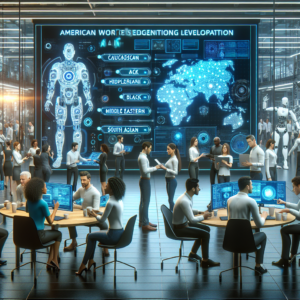Exclusive: Intel’s New CEO Plots Overhaul of Manufacturing and AI Operations
In a landmark move, Intel’s newly appointed CEO is set to radically transform the company’s approach to manufacturing and artificial intelligence (AI) operations. This shift comes at a pivotal moment in the semiconductor industry, as global demand for chips continues to rise while competition heats up from both established players and new entrants. As the tech giant attempts to regain its footing, the strategic overhaul aims to position Intel as a frontrunner in the rapidly evolving tech landscape.
Understanding the Need for Change
Intel has faced numerous challenges in recent years, including production delays, a loss of market share, and increased pressure from competitors like AMD and NVIDIA. The company’s traditional manufacturing practices have struggled to keep pace with the unprecedented demand for chips across various sectors, including automotive, consumer electronics, and cloud computing.
The new CEO recognizes that the time for change is now. He has indicated that Intel must enhance its manufacturing capabilities and invest heavily in AI to not only survive but thrive in this competitive environment. This dual focus on manufacturing and AI is expected to fuel innovation and drive efficiency across all sectors of the business.
Revamping Manufacturing Operations
The first pillar of the CEO’s strategy involves a comprehensive overhaul of Intel’s manufacturing processes. Currently, the company is transitioning from a singular focus on internal manufacturing to a more flexible and diversified approach that includes partnerships and collaborations with other manufacturers. This move aims to boost production efficiency and reduce lead times.
Investment in Advanced Manufacturing Technologies
To achieve these goals, Intel plans to invest significantly in advanced manufacturing technologies. These investments will include state-of-the-art fabrication facilities that utilize cutting-edge techniques to produce semiconductors. The company is also exploring the integration of automation and robotics within its plants, which will not only streamline operations but also enhance the overall quality of its products.
Expansion of Outsourcing Partnerships
In addition to reinforcing its internal manufacturing capabilities, Intel is likely to expand its outsourcing partnerships. Collaborating with third-party foundries can provide Intel with the flexibility to meet fluctuating market demands while optimizing production costs. This strategy has already shown promise in helping other semiconductor companies scale rapidly and compete effectively in the global market.
Investing in Artificial Intelligence
The second pillar of the new CEO’s strategy revolves around the integration of AI into all facets of Intel’s operations. As AI technology continues to advance, its applications are becoming increasingly crucial for businesses across various industries. Intel is committed to harnessing the power of AI to improve product offerings and bolster operational efficiency.
AI-Driven Product Development
One of the main areas where Intel aims to leverage AI is in product development. By utilizing AI algorithms and machine learning models, Intel can accelerate the design and testing of its semiconductor products. This will not only help in reducing time-to-market but also ensure that the company stays ahead of industry trends and consumer demands.
Enhancing Manufacturing with AI
Furthermore, AI will play a significant role in enhancing manufacturing processes. Smart factories equipped with AI technology can monitor production lines in real-time, detect anomalies, and predict maintenance needs before issues arise. This proactive approach will minimize downtime and improve overall efficiency, allowing Intel to maximize output and profitability.
Challenges on the Road Ahead
While the new CEO’s vision is ambitious and forward-thinking, Intel faces several challenges as it embarks on this transformative journey. The semiconductor industry is characterized by rapid technological changes, and maintaining a competitive edge requires constant adaptation and innovation.
Competition from Rivals
Intel must contend with fierce competition from both established semiconductor companies and emerging startups that are eager to capitalize on new technologies. Companies like NVIDIA, which has made significant inroads into AI and gaming sectors, and AMD, which has gained ground in high-performance computing, pose substantial threats to Intel’s market share.
Supply Chain Constraints
The ongoing global semiconductor shortage underscores the vulnerabilities of supply chains, and Intel is not immune to these challenges. Disruptions in the supply chain can lead to extended lead times and production delays, impacting Intel’s ability to meet market demands. Addressing these supply chain issues will be crucial to the success of the new operational strategies.
Conclusion: A Bright Future for Intel?
As Intel embarks on this ambitious overhaul of its manufacturing and AI operations, the stakes are undoubtedly high. The newly appointed CEO’s vision presents an opportunity for the company to reclaim its status as a leader in the semiconductor industry. By embracing advanced manufacturing techniques and harnessing the power of AI, Intel is poised to navigate the complexities of the modern tech landscape.
While challenges remain, the strategic changes outlined by the CEO signal a commitment to innovation and excellence. If executed well, these initiatives could pave the way for a brighter future for Intel, restoring its reputation and ensuring its relevance in an increasingly competitive market. As the semiconductor industry continues to evolve, all eyes will be on Intel to see how it responds to the demands of the future.



